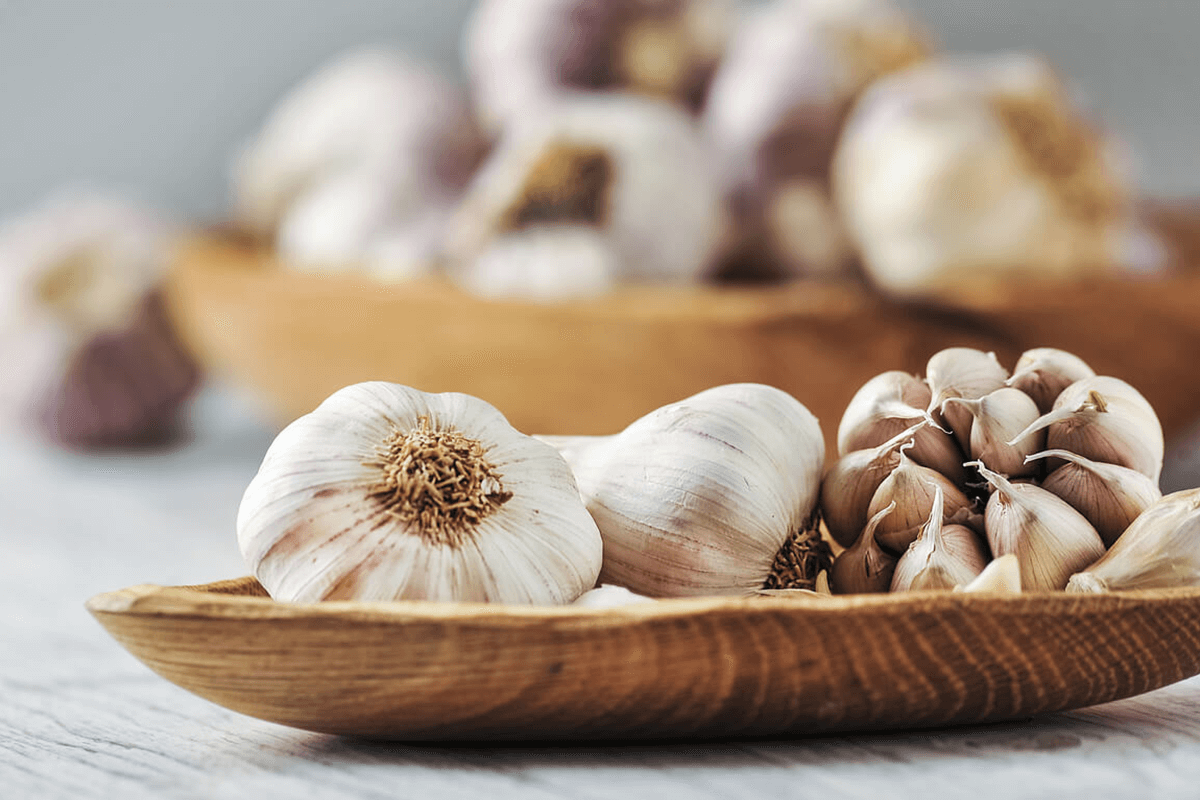
Colder weather may increase the occurrence of the common cold, flu, and other seasonal illnesses. (28)
Common fall illnesses
While illnesses spread year-round, transmission of certain respiratory infections typically peaks during autumn and winter months. These cold and flu symptoms can be caused by a variety of seasonal and year-round respiratory viruses including:- Adenovirus
- Human coronavirus
- Human respiratory syncytial virus
- Influenza virus
- Rhinovirus (24)
4 Healthy habits to lower your risk
Proactively maintaining a healthy immune system can help protect you against whatever illness happens to be going around. Paired with immune-fortifying supplements, these healthy habits can help keep you healthy during cold and flu season.1. Practice good hygiene
Since most viruses are spread through direct contact with another person or by touching surfaces like doorknobs, it’s important to wash your hands frequently with soap and water. (25) While not as effective as soap and water, an alcohol-based hand sanitizer can also help reduce the number of bacteria and viruses to which you are exposed if you can’t wash your hands. (33)2. Get some exercise
Studies have found a positive association between moderate, consistent exercise and a strong immune system. According to research published in the journal Neurologic Clinicians, regular moderate to strenuous exercise boosts the circulation of pathogen-fighting white blood cells and reduces inflammation. (2)(35) Aim to get at least 30 minutes of aerobic activity most days. (8) Adding resistance training to your routine also boosts glutathione levels. (11) Most antioxidants we obtain from our diet, but glutathione is produced within the body. Glutathione protects cells from damage, detoxifies drugs, and maintains immune function. (30) Research indicates that glutathione may be an antiviral agent, and low glutathione levels may increase susceptibility to viral infection. (1)(13)
As little as one session of moderate to vigorous intensity exercise can improve sleep quality. (3)
3. Get some exercise
Studies have found a positive link between moderate, consistent exercise and a strong immune system. According to research published in the journal Neurologic Clinicians, regular moderate to strenuous exercise boosts the circulation of germ-fighting white blood cells and reduces inflammation. (7)(8) Aim to get at least 30 minutes of aerobic activity most days. And don’t forget the weights. Adding resistance training twice a week not only builds muscle, but it also boosts glutathione levels. Glutathione is an amino acid that supports your defenses by helping immune cells produce compounds that destroy harmful pathogens. (9)4. Sleep well
Not getting enough sleep can suppress your immune response and put you at a greater risk of getting sick. Here’s why: people who are sleep deprived develop fewer antibodies and are more prone to chronic inflammation. (10) What’s more, people who sleep less are more likely than well-rested individuals to die from all causes. (11)Did you know? If you’ve noticed that you’re more likely to get sick after a stressful event, here’s the reason: chronic stress leads to higher levels of cortisol—a stress hormone that causes immune cells to age faster. (12)
5 supplements to keep you healthy this fall
When it comes to staying healthy, it’s wise to think ahead. Assembling a natural wellness kit now will ensure that your immune system is prepared to ward off colds, flu, and other seasonal maladies. Combining the following immune-boosting supplements with a healthy lifestyle can give you the protection you need to be as healthy as possible throughout the fall.1. Aged garlic extract
While garlic’s power over vampires may be the stuff myths are made of, scientists at the University of Florida have found that aged garlic extract (AGE) can reduce the duration of the common cold or bout with the flu by as much as 61 percent. During their study, 120 cold and flu sufferers also experienced a 21 percent reduction in the number of symptoms and 58 percent fewer missed workdays due to their illness. According to the researchers, this was because AGE boosted the number of T-cells, especially natural killer (NK) cells. (13)
Aged garlic extract effectively increases key immune cells to help eliminate common viral infections.
2. Epicor
Created via a proprietary fermentation process, Epicor is a yeast-based nutrient composed of dozens of compounds and metabolites that work together to strengthen the immune system. One study published in the Journal of Medicinal Food found that Epicor increases the activation of NK cells within just two hours after taking it. (17) Another trial showed that supplementation positively influenced antibody count in a group of healthy people. (16)3. Olive leaf extract
Olive leaf has been used medicinally since biblical times. The secret to its healing effects lies in the herb’s natural antioxidants, especially oleuropein—a compound with antibacterial, antiviral, and antifungal properties. (29) In a recent study that appeared in the journal Nutrients, 32 high school athletes were given either an olive leaf supplement or a placebo. Over the next nine weeks, researchers found that the kids taking the supplement experienced 28% fewer sick days than those taking the placebo. (31)4. Pelargonium
Pelargonium is a South African herb with antibacterial, antiviral, and expectorant properties. More than 20 clinical studies show that this little-known herb can safely and effectively treat colds and other seasonal illnesses like upper respiratory tract infections thanks to its antimicrobial, antiviral, and immune-modulating properties. (18) During a 2007 trial of 103 adults suffering from cold symptoms, participants received either pelargonium or a placebo. After ten days, 79% of the pelargonium group was clinically cured, compared to just 31% of those taking the placebo. (19) Another study of 217 patients with bronchitis showed that those taking a liquid extract of the herb experienced more symptomatic relief than those taking a placebo. (22)5. Vitamin D
Often called the “sunshine vitamin,” studies suggest that this important nutrient may help immune cells identify and destroy the bacteria and viruses that make us sick. In a study published in the American Journal of Clinical Nutrition, children who took 1,200 IU of vitamin D daily were 42% less likely to catch a flu virus than kids who took a placebo. (34) Vitamin D may also protect against colds and other respiratory tract infections, since it was found to reduce the risk of getting an acute respiratory infection by 12% in a large study of 25 randomized controlled trials. It also effectively reduces severe asthma exacerbations. (20)The bottom line
Getting ahead of common fall illnesses—and being ready if you do get sick—is the key to surviving and thriving during these months. Practice good hygiene, exercise regularly, and get plenty of good quality sleep can help support immune function and prevent seasonal sickness. If you’re a patient, ask your integrative healthcare practitioner about immune-supportive supplements that are suitable for your wellness plan.- Cai, J., Chen, Y., Seth, S., Furukawa, S., Compans, R. W., & Jones, D. P. (2003). Inhibition of influenza infection by glutathione. Free Radical Biology & Medicine, 34(7), 928–936.
- Campbell, J. P., & Turner, J. E. (2018). Debunking the myth of exercise-induced immune suppression: Redefining the impact of exercise on immunological health across the lifespan. Frontiers in Immunology, 9, 648.
- CDC. (2021a). Benefits of physical activity. https://www.cdc.gov/physical-activity-basics/about/index.html
- CDC. (2021b). Common colds: Protect yourself and others. https://www.cdc.gov/rhinoviruses/about/index.html
- CDC. (2021c). Symptoms – adenovirus. https://www.cdc.gov/adenovirus/about/index.html
- CDC. (2021d). People at high risk of flu. https://www.cdc.gov/flu/highrisk/index.htm
- CDC. (2021e). People at high risk for severe RSV infection. https://www.cdc.gov/rsv/causes/l
- CDC. (2021f). How much physical activity do adults need? https://www.cdc.gov/physical-activity-basics/guidelines/adults.html
- CDC. (2021g). Symptoms and care – RSV. https://www.cdc.gov/rsv/symptoms/index.html
- CDC. (2021h). How to prevent flu. https://www.cdc.gov/flu/prevention/
- Elokda, A. S., & Nielsen, D. H. (2007). Effects of exercise training on the glutathione antioxidant system. European Journal of Cardiovascular Prevention and Rehabilitation: Official Journal of the European Society of Cardiology, Working Groups on Epidemiology & Prevention and Cardiac Rehabilitation and Exercise Physiology, 14(5), 630–637.
- Fares, A. (2013). Factors influencing the seasonal patterns of infectious diseases. International Journal of Preventive Medicine, 4(2), 128–132.
- Ghezzi, P. (2011). Role of glutathione in immunity and inflammation in the lung. International Journal of General Medicine, 4, 105–113.
- Irwin, M. R., Wang, M., Campomayor, C. O., Collado-Hidalgo, A., & Cole, S. (2006). Sleep deprivation and activation of morning levels of cellular and genomic markers of inflammation. Archives of Internal Medicine, 166(16), 1756–1762.
- Itani, O., Jike, M., Watanabe, N., & Kaneita, Y. (2017). Short sleep duration and health outcomes: A systematic review, meta-analysis, and meta-regression. Sleep Medicine, 32, 246–256.
- Jensen, G. S., Patterson, K. M., Barnes, J., Schauss, A. G., Beaman, R., Reeves, S. G., & Robinson, L. E. (2008). A double-blind placebo-controlled, randomized pilot study: Consumption of a high-metabolite immunogen from yeast culture has beneficial effects on erythrocyte health and mucosal immune protection in healthy subjects. The Open Nutrition Journal, 2(1), 68–75.
- Jensen, G. S., Redman, K. A., Benson, K. F., Carter, S. G., Mitzner, M. A., Reeves, S., & Robinson, L. (2011). Antioxidant bioavailability and rapid immune-modulating effects after consumption of a single acute dose of a high-metabolite yeast immunogen: Results of a placebo-controlled double-blinded crossover pilot study. Journal of Medicinal Food, 14(9), 1002–1010.
- Kolodziej, H. (2011). Antimicrobial, antiviral and immunomodulatory activity studies of Pelargonium sidoides (EPs® 7630) in the context of health promotion. Pharmaceuticals , 4(10), 1295–1314.
- Lizogub, V. G., Riley, D. S., & Heger, M. (2007). Efficacy of a pelargonium sidoides preparation in patients with the common cold: A randomized, double blind, placebo-controlled clinical trial. Explore , 3(6), 573–584.
- Martineau, A. R., Jolliffe, D. A., Hooper, R. L., Greenberg, L., Aloia, J. F., Bergman, P., Dubnov-Raz, G., … & Camargo, C. A., Jr. (2017). Vitamin D supplementation to prevent acute respiratory tract infections: Systematic review and meta-analysis of individual participant data. BMJ , 356, i6583.
- Martinez, M. E. (2018). The calendar of epidemics: Seasonal cycles of infectious diseases. PLoS Pathogens, 14(11), e1007327.
- Matthys, H., & Heger, M. (2007). Treatment of acute bronchitis with a liquid herbal drug preparation from Pelargonium sidoides (EPs 7630): A randomised, double-blind, placebo-controlled, multicentre study. Current Medical Research and Opinion, 23(2), 323–331.
- Morey, J. N., Boggero, I. A., Scott, A. B., & Segerstrom, S. C. (2015). Current directions in stress and human immune function. Current Opinion in Psychology, 5, 13–17.
- Moriyama, M., Hugentobler, W. J., & Iwasaki, A. (2020). Seasonality of respiratory viral infections. Annual Review of Virology, 7(1), 83–101.
- Moyad, M. A., & Robinson, L. E. (2008). Lessons learned from the 2007-2008 cold and flu season: What worked and what was worthless. Urologic Nursing, 28(2), 146–148, 145.
- Nantz, M. P., Rowe, C. A., Muller, C. E., Creasy, R. A., Stanilka, J. M., & Percival, S. S. (2012). Supplementation with aged garlic extract improves both NK and γδ-T cell function and reduces the severity of cold and flu symptoms: A randomized, double-blind, placebo-controlled nutrition intervention. Clinical Nutrition , 31(3), 337–344.
- National Cancer Institute. (n.d.). Natural killer cell. NCI Dictionary of Cancer Terms. https://www.cancer.gov/publications/dictionaries/cancer-terms/def/natural-killer-cell
- National Institutes of Health. (2008). Flu virus fortified in colder weather. https://www.nih.gov/news-events/nih-research-matters/flu-virus-fortified-colder-weather
- Omar, S. H. (2010). Oleuropein in olive and its pharmacological effects. Scientia Pharmaceutica, 78(2), 133–154.
- Sinha, R., Sinha, I., Calcagnotto, A., Trushin, N., Haley, J. S., Schell, T. D., & Richie, J. P., Jr. (2018). Oral supplementation with liposomal glutathione elevates body stores of glutathione and markers of immune function. European Journal of Clinical Nutrition, 72(1), 105–111.
- Somerville, V., Moore, R., & Braakhuis, A. (2019). The effect of olive leaf extract on upper respiratory illness in high school athletes: A randomised control trial. Nutrients, 11(2).
- Spiegel, K., Sheridan, J. F., & Van Cauter, E. (2002). Effect of sleep deprivation on response to immunization. JAMA: The Journal of the American Medical Association, 288(12), 1471–1472.
- Tuladhar, E., Hazeleger, W. C., Koopmans, M., Zwietering, M. H., Duizer, E., & Beumer, R. R. (2015). Reducing viral contamination from finger pads: Handwashing is more effective than alcohol-based hand disinfectants. The Journal of Hospital Infection, 90(3), 226–234.
- Urashima, M., Segawa, T., Okazaki, M., Kurihara, M., Wada, Y., & Ida, H. (2010). Randomized trial of vitamin D supplementation to prevent seasonal influenza A in schoolchildren. The American Journal of Clinical Nutrition, 91(5), 1255–1260.
- Woods, J. A., Vieira, V. J., & Keylock, K. T. (2009). Exercise, inflammation, and innate immunity. Immunology and Allergy Clinics of North America, 29(2), 381–393.





